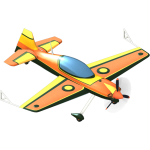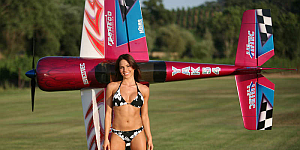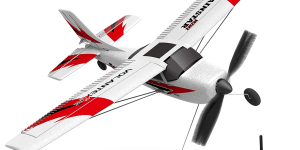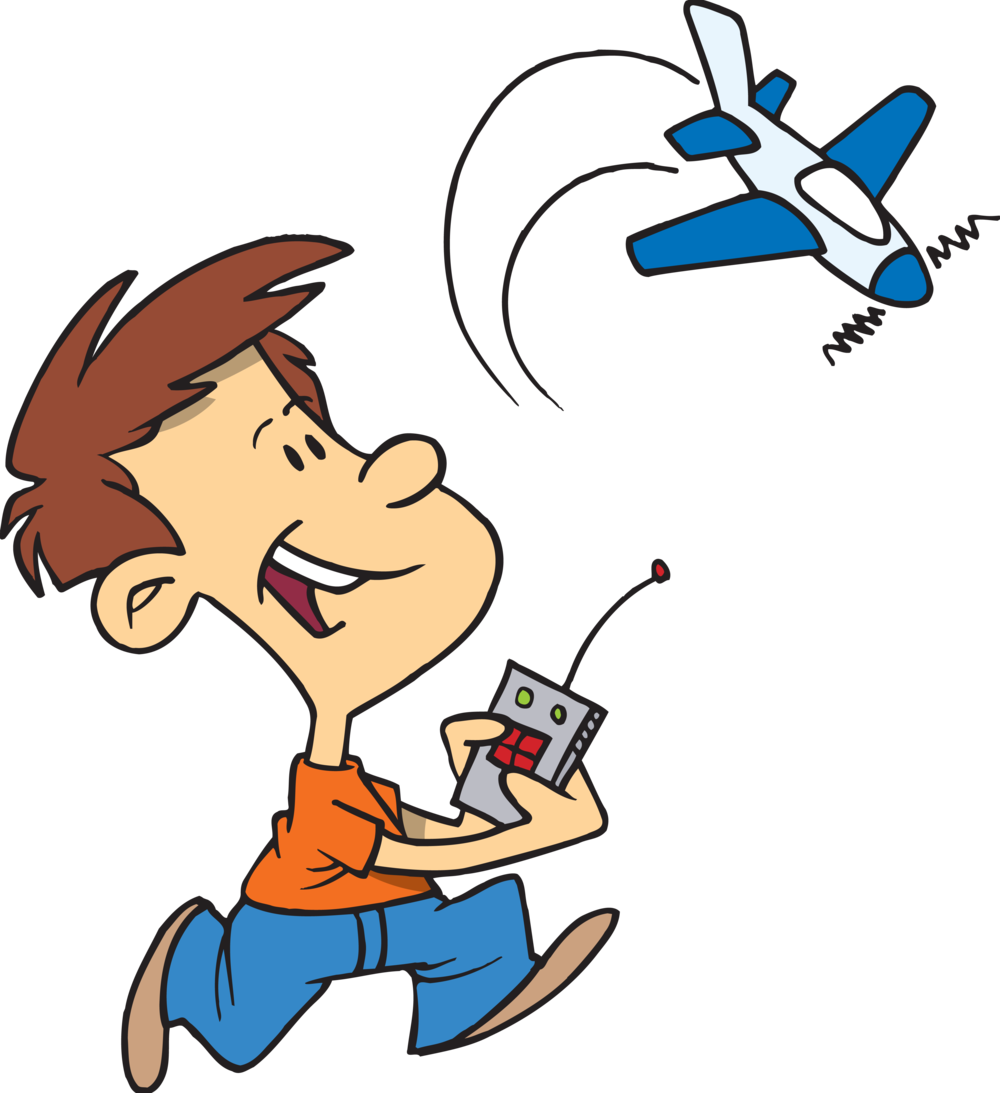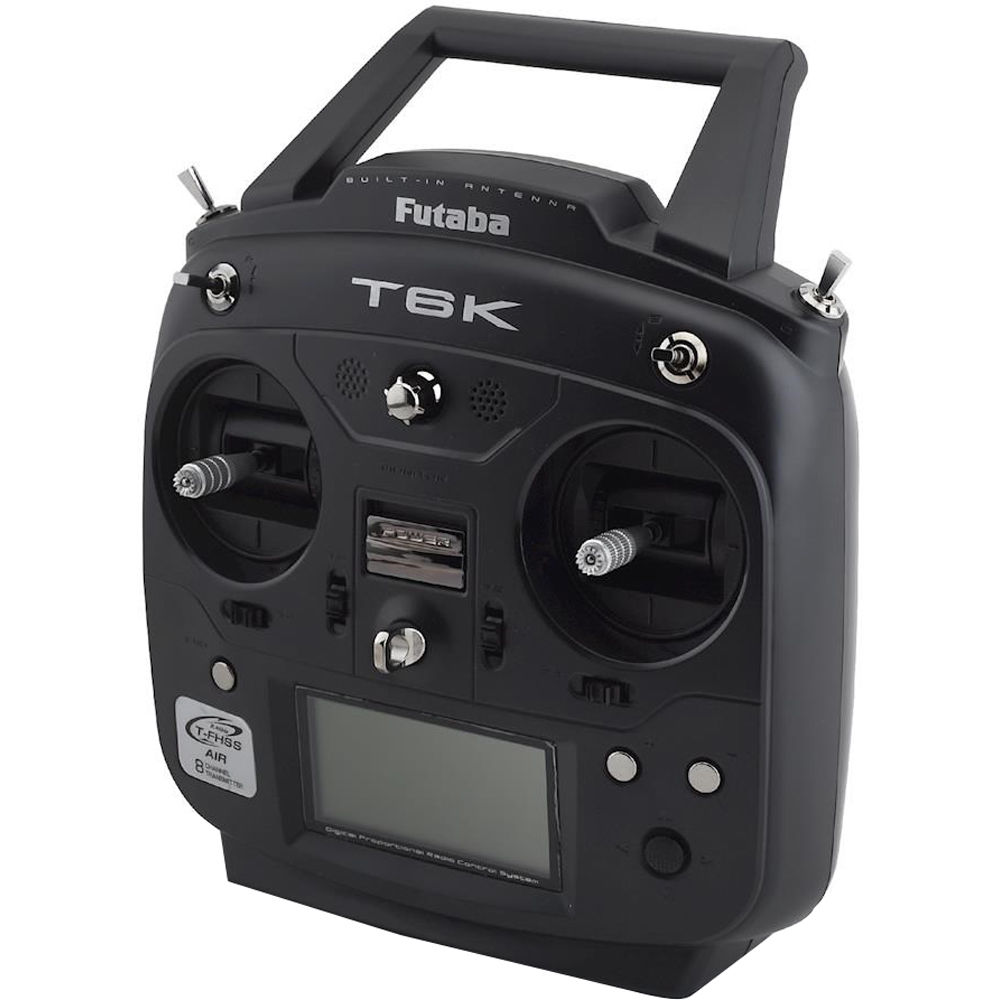Flying RC planes is an exhilarating and rewarding hobby for enthusiasts of all ages. However, windy conditions can pose a significant challenge, especially for beginners. Choosing the right RC plane designed to handle wind effectively is crucial for a safe and enjoyable flying experience. A well-suited model can make it easier to maintain control, perform aerobatics, and land safely, even in less-than-ideal weather. In this context, selecting the best RC planes for windy conditions becomes essential.
Beginners often struggle with maintaining control of their RC planes in windy conditions due to the increased air turbulence and gusts that can lead to unstable flight. This may result in crashes and damage to the aircraft or even losing the plane entirely. Additionally, flying in the wind requires a different set of skills and techniques that beginners may not have developed yet. The right RC plane can help mitigate these challenges and aid in building essential skills.
This article aims to provide beginner RC plane enthusiasts with the necessary information to make an informed decision when purchasing an RC plane suitable for windy conditions. The guide will cover essential topics such as the basics of RC planes, key features to look for in a wind-capable aircraft, factors to consider when comparing different models, tips for flying in windy conditions, and additional resources to further your knowledge and skills in the hobby. Armed with this information, you will be better equipped to choose the best RC plane for your needs and enjoy the thrill of flying, even on those blustery days.
Understanding the Basics of RC Planes
Contents
Types of RC Planes
- Trainers: trainer planes are designed for beginners who are new to RC flying. They typically have a high-wing configuration, which provides more stability and makes them easier to control. Trainers are built to be forgiving and durable, allowing beginners to make mistakes without causing significant damage to the aircraft. They often have a slower flying speed and simpler control systems, which give novice pilots more time to react and learn.
- Sport Planes: sport planes are a step up from trainers, offering more speed and agility. These planes are designed for pilots who have mastered basic flying skills and are looking for a more challenging and engaging flying experience. Sport planes usually have low wing configurations and are more aerodynamically efficient, allowing for faster speeds and more precise control. They are suitable for intermediate pilots who want to practice advanced flying techniques and maneuvers.
- Aerobatic Planes: aerobatic planes are designed for performing stunts, tricks, and advanced maneuvers in the air. These planes typically have a symmetrical wing profile, allowing them to easily fly upside down and perform aerobatics. They also have powerful motors and responsive control surfaces, enabling pilots to execute precise and complex maneuvers. Aerobatic planes are best suited for experienced pilots who want to push the limits of their flying abilities.
- Gliders: gliders are a unique type of RC plane that relies on the lift generated by rising air currents to stay airborne. They have long wings with a high aspect ratio, which increases their lift and allows them to glide efficiently through the air. Gliders can be launched by hand, with a bungee cord, or towed by another RC plane. Some gliders also have electric motors for powered flight. Gliders are ideal for pilots who enjoy soaring and want to experience the unique challenge of flying without constant power.
Components of an RC Plane
- Airframe: the airframe is the structural foundation of an RC plane, including the wings, fuselage, and tail. It is typically made from materials such as foam, balsa wood, or composite materials, which balance strength, weight, and durability. The design of the airframe plays a significant role in the plane’s flight characteristics, affecting its stability, maneuverability, and overall performance.
- Motor: the motor provides the power the RC plane needs to fly. Electric motors are the most common type used in modern RC planes, with brushless motors being preferred for their efficiency, power, and low maintenance requirements. The motor’s size and power output should be appropriate for the plane’s size and intended purpose, as this directly impacts the plane’s performance and flight times.
- Radio System: the radio system allows the pilot to control the RC plane remotely. It consists of a transmitter, held by the pilot, and a receiver, installed in the plane. The transmitter sends control inputs from the pilot to the receiver, which then translates these inputs into commands for the plane’s control surfaces and motor. Most modern radio systems use 2.4 GHz frequency bands, offering reliable and interference-free control.
- Batteries: batteries provide the power needed for the RC plane’s motor, servos, and other electronics. Most RC planes use rechargeable lithium polymer (LiPo) batteries, which are lightweight and offer high energy density. The capacity and voltage of the battery determine the plane’s flight time and power output. Choosing the right battery for your RC plane is essential to ensure optimal performance and flight times.
Key features to look for in an RC plane for windy conditions
Wing design
- High wing vs. low wing
The position of the wings on an RC plane can significantly affect its stability and performance in windy conditions. High-wing planes have their wings attached to the top of the fuselage, which creates a more stable and forgiving platform, especially for beginners. The low center of gravity in high-wing planes provides a pendulum effect that helps the plane self-correct and maintains a level flight. In contrast, low-wing planes have their wings attached closer to the bottom of the fuselage. These planes are generally more agile and responsive, making them suitable for experienced pilots who desire more aerobatic capabilities in windy conditions.
- Dihedral angle
The dihedral angle refers to the upward angle of the wings relative to the horizontal plane. A greater dihedral angle increases the roll stability of the aircraft, allowing it to return to level flight more quickly after a disturbance, such as a gust of wind. While a higher dihedral angle can be beneficial for beginners, it may limit the aerobatic performance of the plane. When selecting an RC plane for windy conditions, consider choosing one with a moderate dihedral angle to balance stability and maneuverability.
- Wing loading
Wing loading is the ratio of the aircraft’s weight to the wing area. Planes with lower wing loading tend to have a slower stall speed and can handle turbulence more effectively, making them better suited for flying in windy conditions. In contrast, planes with high wing loading are generally faster and more responsive but may be more challenging to control in turbulent air. Beginners should look for planes with lower wing loading for a more forgiving flying experience in windy conditions.
Stability and control
- Aileron control
Ailerons are the control surfaces located on the trailing edge of the wings that enable the plane to roll. Planes with aileron control offer better roll authority, which allows for more precise control and maneuverability in windy conditions. While many beginner planes have only rudder and elevator control, a plane with aileron control is highly recommended for flying in windier environments.
- Gyroscopic stabilization
Gyroscopic stabilization systems use sensors to detect and counteract undesired movements, such as those caused by wind gusts. A gyro system can help maintain the plane’s stability by automatically adjusting the control surfaces, making it easier to fly in windy conditions. Many modern RC planes come with built-in gyros, but you can also purchase aftermarket systems to add this feature to your aircraft.
- V-tail configuration
A V-tail configuration combines the functions of the horizontal and vertical stabilizers, using two angled surfaces instead of the traditional tail arrangement. This design can offer improved stability and control in windy conditions, as it reduces the effects of turbulence on the tail surfaces. While not a necessity, a V-tail configuration can be an advantageous feature to have when flying in windier conditions.
Factors to consider when comparing RC planes for windy conditions
Durability and Build Quality
- Material Selection
When choosing an RC plane for windy conditions, the materials used in its construction play a crucial role in determining its durability. Common materials used in RC planes include foam, balsa wood, and composite materials.
- Foam: a lightweight and affordable option is typically made of Expanded Polyolefin (EPO) or Expanded Polystyrene (EPS). EPO foam, in particular, is more flexible and can withstand minor crashes better than EPS. However, foam planes might not be as rigid or resistant to damage as other materials.
- Balsa wood: balsa wood is a traditional material used in RC planes, valued for its lightweight and rigid nature. A well-built balsa plane can withstand windy conditions better than foam planes. However, balsa wood can be more challenging to repair if damaged.
- Composite materials: these materials are a combination of materials like carbon fiber, fiberglass, or Kevlar. Composite materials offer excellent strength and rigidity, making them suitable for windy conditions. They are more durable than foam or balsa wood planes but are generally more expensive.
- Reinforcements
Reinforcements are added to critical areas of an RC plane to improve its structural integrity and resilience in windy conditions.
- Carbon fiber: carbon fiber is a lightweight, strong, and stiff material that can be used to reinforce wings, fuselages, and other critical parts of the RC plane. The addition of carbon fiber reinforcements can help a plane withstand the stress and turbulence experienced in windy conditions.
- Fiberglass: fiberglass reinforcements can also be used to add strength and durability to an RC plane. While not as lightweight or strong as carbon fiber, fiberglass is more affordable and can still provide significant improvements in a plane’s resilience.
- Spare Parts Availability
Accidents and wear are inevitable, especially when flying in windy conditions. Choosing an RC plane with readily available spare parts is essential, making repairs and maintenance more manageable. Popular and reputable brands often have better spare parts availability and a more extensive network of distributors and retailers. Before purchasing an RC plane, it’s a good idea to check the availability of essential components like wings, fuselages, landing gears, and control surfaces to ensure you can quickly repair your plane if needed.
Skill level compatibility
- Beginner-friendly features
When choosing an RC plane for windy conditions, it is crucial to consider the pilot’s skill level. For beginners, look for models that come with beginner-friendly features designed to make the learning process easier and safer. Some of these features may include:
- Self-stabilization technology: self-stabilization technology, such as built-in gyroscopes or advanced stabilization systems, can help counteract wind effects and keep the plane level, making it easier for novice pilots to maintain control in windy conditions.
- Multiple flight modes: some RC planes come with various flight modes that can be easily switched between. These modes can range from beginner mode, which provides more stability and limited control authority, to advanced mode, allowing for full control and aerobatics.
- Easy-to-repair design: beginners are more likely to crash their planes as they learn, so looking for models that are easy to repair or have readily available replacement parts is essential.
- Intermediate-level challenges
As pilots gain experience and confidence, they may want to look for RC planes with features that present more challenges and allow them to develop their skills further. Some intermediate-level features include:
- More agile airframes: Intermediate pilots may prefer planes with more responsive control surfaces and airframes designed for greater maneuverability, allowing them to experiment with aerobatics and handle wind gusts more effectively.
- Higher power-to-weight ratio: A higher power-to-weight ratio can provide better performance in windy conditions, allowing for faster climbs and more control authority.
- Advanced capabilities for growth
Experienced pilots may want to look for planes that offer advanced capabilities to challenge their skills and keep them engaged. Some advanced features to consider are:
- Advanced aerobatic capabilities: High-performance RC planes designed for aerobatics can handle more aggressive maneuvers, providing an exciting challenge for experienced pilots in windy conditions.
- Customization options: Advanced pilots may appreciate models offering customization options, such as adjustable control surface throws or changing the power system for higher performance.
By considering the skill level of the pilot and selecting an RC plane with appropriate features, beginners can safely learn and grow in their hobby, while more experienced pilots can continue to challenge themselves and refine their skills in windy conditions.
Budget and value for money
- Initial cost of the RC plane: when shopping for an RC plane suitable for windy conditions, it’s crucial to consider the initial cost. The prices of RC planes can vary greatly depending on the brand, features, and materials used. As a beginner, you might be tempted to go for the cheapest option available, but it’s important to balance the cost with the quality and performance of the plane. A more expensive model may have better features or durability, which can be worth the investment in the long run.
- Maintenance and repair costs: another important aspect to consider when determining the value for money is the cost of maintaining and repairing the plane. RC planes, especially those flying in windy conditions, may require more frequent maintenance and repairs due to the stress on the airframe and components. Before purchasing a plane, research the cost of replacement parts and how easy it is to perform repairs. Models with easily accessible and affordable parts will save you money and time in the long run.
- Long-term value and upgrade potential: when evaluating the budget and value for money, think about the long-term value of the RC plane. A model that can grow with your skills and be upgraded over time can offer better value than a cheaper model that you’ll quickly outgrow. Look for planes with modular components that can be swapped out as you advance or customize them to handle windy conditions better. Additionally, consider planes that have a strong resale market, as this can help you recoup some of your investment when you decide to upgrade or switch to a different model.
- Price vs. performance trade-offs: carefully weigh the trade-offs between price and performance. While you don’t need the most expensive model on the market, you should prioritize features and performance that will help you fly confidently in windy conditions. Look for planes with a good balance of stability, control, and power, even if they come at a slightly higher price point. Remember that investing in a quality RC plane designed for windy conditions will make your flying experience more enjoyable and reduce the likelihood of crashes and damage due to poor performance.
Brand reputation and customer support
- Manufacturer’s track record
When selecting an RC plane for windy conditions, it’s crucial to consider the reputation of the manufacturer. A well-established and respected brand typically offers higher-quality products, better engineering, and a track record of satisfied customers. To evaluate a manufacturer’s track record, research their history, years of experience in the industry, and any industry awards or recognition they’ve received. This information will help you gain confidence in the quality and reliability of their products.
- Warranty and after-sales support
A strong warranty and after-sales support are essential factors to consider when choosing an RC plane. A good warranty indicates that the manufacturer stands behind their product and is confident in its quality. It also gives you peace of mind, knowing you’ll be covered if any issues arise.
Be sure to carefully review the warranty terms, including the duration and scope of coverage. Keep in mind that some warranties may cover only specific parts or components, while others may be more comprehensive.
After-sales support is another vital aspect to look for, as it ensures that you’ll have access to help and guidance if you encounter any issues or have questions about your RC plane. Check for the availability of customer support through different channels, such as phone, email, or live chat. A responsive and knowledgeable support team can significantly enhance your overall experience.
- Online resources and community presence
A brand with a strong online presence will likely offer more learning and troubleshooting resources. Look for manufacturers that maintain a user-friendly website with easy-to-find information about their products, such as user manuals, FAQs, and tutorial videos. This will make it easier for you to access the information you need to operate and maintain your RC plane.
Additionally, check for the manufacturer’s presence in online forums and social media. Brands that engage with their customers and the RC community are generally more attentive to user feedback and committed to continuous improvement. Participating in online communities can also help you connect with other enthusiasts, exchange tips and tricks, and stay informed about the latest product updates and innovations.
- Assessing customer reviews
Customer reviews can be a valuable source of information when evaluating a brand’s reputation and products. Look for reviews from experienced pilots who have flown the specific RC plane model you’re considering, particularly in windy conditions. Pay attention to comments about the plane’s performance, durability, ease of use, and any recurring issues or concerns.
Keep in mind that it’s essential to read multiple reviews to get a balanced perspective, as individual experiences can vary. By assessing customer reviews, you’ll gain valuable insights into the real-world performance of the RC plane and the satisfaction level among its users.
Compatibility with your existing RC gear
- Transmitter compatibility: when selecting an RC plane for windy conditions, ensuring that the plane’s radio system is compatible with your existing transmitter is essential. Most modern transmitters use 2.4GHz technology, which provides a robust connection and helps avoid interference with other pilots. To determine compatibility, check if the transmitter and receiver use the same protocol (e.g., DSMX, FASST, AFHDS). If you’re unsure, consult the manufacturer’s documentation or seek help from an experienced RC pilot.
- Battery compatibility and requirements: another critical aspect to consider is the compatibility of the RC plane with your current battery collection. RC planes may require different types of batteries, such as LiPo, NiMH, or LiFe, with varying voltage and capacity specifications. Check the RC plane’s recommended battery type and ensure it matches your existing batteries. Also, consider the required connector type (e.g., XT60, Deans, EC3) and verify that your batteries use the same connectors or that you have appropriate adapters.
- Other essential accessories: apart from the transmitter and batteries, you may need additional accessories to use and maintain your RC plane. These accessories can include battery chargers, servo extensions, or even specific tools for assembly and maintenance. Make sure you have these accessories or factor in their cost when evaluating your purchase. If you’re new to the hobby, investing in a complete starter kit might be a good idea, as it typically includes everything necessary to get started, such as a transmitter, battery, charger, and sometimes even basic tools.
Tips for flying RC planes in windy conditions
Proper launching techniques
Launching your RC plane in windy conditions requires a different approach compared to calm days. Make sure you’re launching your plane into the wind for added lift and control. If possible, have a friend hold the plane and release it once you’ve accelerated the motor to full power. Alternatively, you can throw the plane at a slight upward angle with one hand while controlling the transmitter with the other. This will help your plane gain altitude and stabilize quickly.
Adjusting trims and control surfaces
Before flying in windy conditions, it’s essential to ensure your RC plane’s control surfaces are trimmed correctly. This helps maintain the plane’s stability and provides you with more control during flight. Check the ailerons, elevator, and rudder, and adjust their neutral positions if necessary. Additionally, adding some down elevator trim can help the plane penetrate the wind better and maintain a straight flight path.
Utilizing wind to perform aerobatics
Windy conditions can be advantageous for performing aerobatics if you know how to use the wind to your benefit. Use the wind to gain altitude and energy before initiating maneuvers like loops and rolls. Remember that the wind direction will affect your plane’s speed, so plan your aerobatics accordingly. When flying downwind, your plane will move faster, while flying into the wind will slow it down. Be prepared to adjust your control inputs to compensate for these speed changes.
Landing safely in windy conditions
Landing an RC plane in windy conditions can be challenging, especially for beginners. Approach the landing strip or area by flying into the wind to increase stability and control. Reduce your plane’s speed gradually, allowing it to descend slowly. Keep a close eye on your plane’s attitude and altitude, and make any necessary adjustments to maintain a stable approach. Be prepared for sudden gusts of wind that might push the plane off course or cause it to stall. Maintain control of the plane until it touches down and stops completely.
Additional resources
YouTube channels and tutorials
YouTube is an excellent resource for visual learners, as it offers countless tutorials, reviews, and demonstrations related to RC planes. By subscribing to reputable channels, you can learn tips and tricks for flying in windy conditions, maintaining your plane, and even modifying it for better performance. Some popular channels include FliteTest, Essential RC, and The RC Saylors.
Local flying clubs and events
Joining a local flying club allows you to meet like-minded individuals who share your passion for RC planes. Clubs often organize events and competitions where you can showcase your skills, learn from others, and enjoy the camaraderie of fellow pilots. To find a club near you, check out the Academy of Model Aeronautics (AMA) club locator or search for local listings online.
Books and magazines
Books and magazines dedicated to RC planes provide valuable insights and up-to-date information on the latest trends, techniques, and products. Some well-known publications in the field include Model Airplane News and Flying Scale Models Magazine. Additionally, comprehensive books like “First Flight: A Beginner’s Guide to RC Airplanes” by Stephen Weber can provide a solid foundation for new pilots.
Conclusion
Recap of the importance of choosing the right RC plane for windy conditions
Selecting the appropriate RC plane for windy conditions is crucial for an enjoyable and successful flying experience. By considering factors such as wing design, stability, control features, durability, skill level compatibility, budget, and compatibility with your existing RC gear, you can make an informed decision and find the perfect RC plane that meets your needs and preferences.
Encouragement to practice and gain experience
As a beginner, it’s essential to be patient and practice regularly to improve your flying skills, especially in windy conditions. Over time, you’ll become more confident and proficient, allowing you to take on more challenging flights and even explore new types of RC planes. Remember that every experienced pilot started as a beginner, and it’s through practice and persistence that they’ve reached their current level of expertise.
Invitation to join the RC plane community and learn from experienced pilots
Lastly, consider joining the RC plane community, both locally and online. Engaging with fellow enthusiasts will provide you with invaluable support, advice, and camaraderie. From online forums and YouTube tutorials to local flying clubs and events, there are countless resources available to help you learn from experienced pilots and enhance your knowledge. Embrace the opportunity to share your experiences and learn from others as you embark on your exciting RC plane journey.

